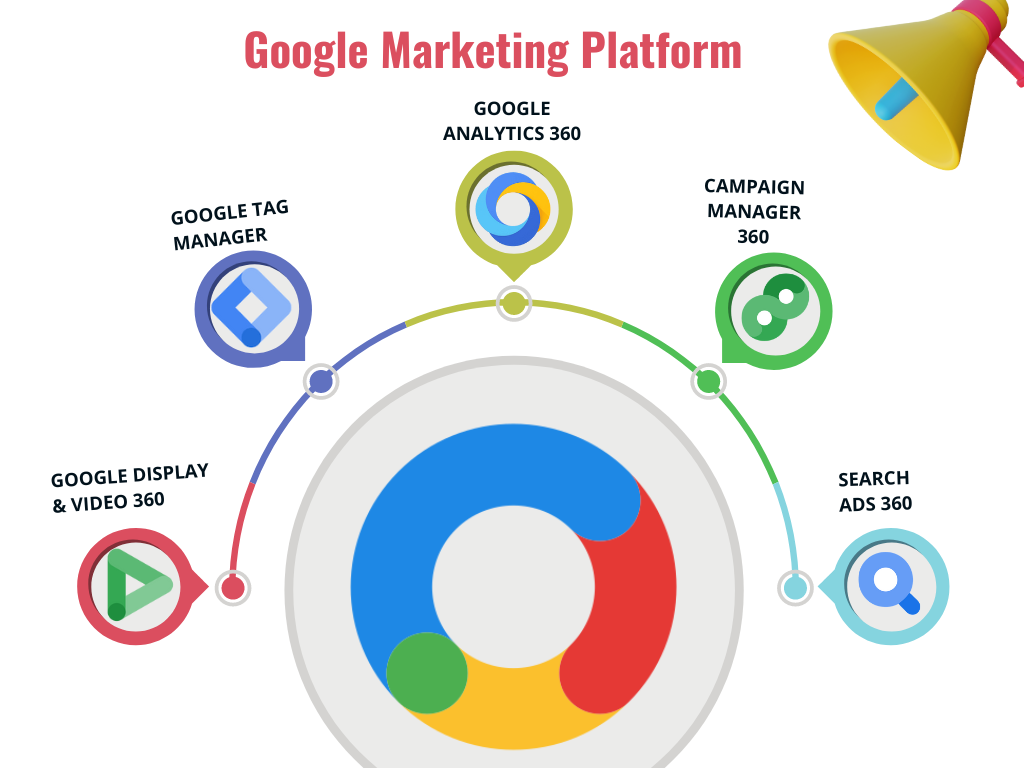Omnichannel Marketing Programs: Definition, AdRoll Strategy, Examples, and Tips

The internet is dynamic, with seemingly endless options for customers to look for information online. As a business owner, not only do you need to implement a digital marketing strategy, but it’s key to leverage multiple platforms to ensure the right people are seeing your messages. Omnichannel marketing programs use this approach, making it possible to promote your business in many places.
Technology is integrated into every aspect of our daily lives, so marketers and business owners need to adapt to ensure their messages change as the online industry shifts. Omnichannel is a dynamic method for meeting people where they are – making it simple for leads to learn about your products and services from any device or online platform.
Even though a lot of coordination and effort goes into effective marketing campaigns, it’s worth the investment because of the immediate and long-term results that are available. With an effective omnichannel marketing strategy, you can bring in leads online, convert them to paying customers, and then keep those people returning when they are ready to buy again.
What Is an Omnichannel Marketing Strategy?
With this method of marketing, omnichannel uses multiple platforms, devices, and channels for marketing. Not only are you advertising in different places, but the unified messaging helps build your brand and establish familiarity among customers interested in your services.
Consistent and cohesive messaging is important because it ensures that you are proactive about sharing messages that resonate with your current and potential customers. This messaging is both on-brand and relevant to your audience, with new omnichannel marketing programs launching throughout the year, depending on the season and current promotions.
It doesn’t matter if a customer is reaching out to you on your website directly, calling on the phone, or sending a direct message on social media. Omnichannel marketing means that customers receive a cohesive experience, regardless of the platform they are using.
What Are Examples of Successful Omnichannel Marketing?
Not only do omnichannel marketing programs use multiple platforms, but it’s an overarching approach to ensure you are engaging users and nurturing leads. The goal is to help leads and customers feel supported by your team, which builds a long-term relationship and list of customers who keep coming back in the future.
For example, in the past, most online businesses only had a website. Now, successful omnichannel marketing campaigns use other online platforms to offer support and share information:
- Facebook messenger
- Google chat
- Live on-website chat
- Email customer support
- Twitter support
- Phone calls
- And more
The key to an effective omnichannel approach is ensuring that all of these channels work together seamlessly. For example, you might have a user-friendly website, engaging social media interactions, and leverage paid ads and mobile marketing. But all of these tools must work together to create a true omnichannel experience for your customers.
There are many online brands that you can research to see successful omnichannel marketing examples: Disney, Apple, Spotify, Starbucks, Walgreens, REI, Chipotle, Amazon, Barnes & Noble, and more. Study how these companies implement their omnichannel marketing programs to get ideas for proven strategies you can use in your campaigns.
Benefits of an Omnichannel Marketing Strategy
Why spend the time and money to build out comprehensive omnichannel marketing programs? There are undeniable benefits for your business, helping with current results and future growth:
- Wider Influence: Expanding your online reach means that you’ll have an easier time meeting customers where they are spending time online. The goal is to minimize the searching that a person must do when looking for the products and services you offer. Omnichannel marketing programs mean your business is always a click or direct message away.
- Happy Customers: The key to ongoing business success is to have a list of satisfied customers. Not only do these people come back when they are ready to buy again, but they are so happy with available services that they are willing to share your business with friends and family. Omnichannel marketing campaigns help to reduce customer churn because your products are easy to buy and deliver the results each customer desires.
- Boost Revenue: When your leads and customers are ready to make a purchase, then omnichannel ensures that they have a simple way to complete this transaction. You can use multiple channels to give people the option to buy products on platforms where they feel comfortable. A good approach boosts overall sales, which has a positive impact on your revenue and bottom line.
- Ideal Communication Timing: An omnichannel approach leverages the benefits of different communication channels while making it simpler to reach leads and customers at the ideal time. This timing is critical because it affects closing rates and overall sales.
- Targeted Demographic: Not only are you sharing marketing messages online, but omnichannel marketing means that you are keeping users’ interests and profiles in mind to ensure that you are optimizing the marketing messages. For example, you can choose filters that target people based on location, age, hobbies, and more.
When you use an omnichannel approach, it has a direct impact on your sales and closing rates. You want great results for your business, which means that it’s worth the investment to implement a successful omnichannel marketing strategy.
How Omnichannel Marketing Differs from a Multi-Channel Approach
Too often, omnichannel and multi-channel marketing are thought to be the same. But the truth is there are some distinct differences between using multiple channels vs. designing effective omnichannel marketing programs.
When you are using a multi-channel strategy, it means that customers have the option to access many different communication platforms when they need to get in contact with your company. But these platforms aren’t necessarily connected or synchronized.
On the other hand, omnichannel marketing programs use multiple channels while also connecting communication across the board. This approach makes it simple to move between channels seamlessly.
Keep in mind that all omnichannel systems fall in the multi-channel category. But not all multi-channel campaigns meet the omnichannel requirements.
Additionally, omnichannel is wider-reaching compared to a basic multi-channel system. For example, your multi-channel marketing program might use 2 – 4 online platforms for marketing and communication. But successful omnichannel marketing campaigns ensure that your business has a presence on all platforms, channels, and devices.
It’s common for businesses to use a multi-channel approach, and this system brings in results because they connect with customers in different online locations. But to take these results to the next level, the customer must have a seamless and consistent experience across all channels. With omnichannel marketing, the interactions ensure efficiency and customer experience regardless of the platform or device the customer uses.
How Do You Build an Omni-Channel Marketing Strategy?
Planning is critical to ensure your omnichannel advertising is seamless and practical. This approach is more than creating a basic online presence. The goal is to focus on customer experience so they are satisfied with every interaction with your brand. You need to show customers that you are on all platforms and channels where they spend time online, and they can rely on a similar experience, no matter where they are shopping or communicating with your team.
Here are a few tips for implementing successful omnichannel marketing campaigns:
- Focus on the Foundation: Start with the essential pieces of your online marketing campaign. The first step is to build a quality, user-friendly website since your marketing campaigns will eventually bring customers back to your website. Ensure you have a good website before investing in other types of online marketing or communication.
- Social Interactions: Now that your website is in place, it’s time to build out your social media profiles. Align the branding on all platforms, and use these channels to funnel people back to your website. Be sure to post regularly and share content that engages your followers. Consider connecting your social publishing to your CRM so you can see where leads and sales are coming from online.
- Respond to Customer Communication: In addition to regular blog and social media posts, also make sure that you are engaging with users. This process involves responding to comments on your posts, answering direct messages, and more. Consistent engagement on all platforms is important to ensure that your brand looks professional and consistent.
- Prioritize Customer Experience: It’s easy to get so distracted by marketing tasks that you oversee the most important thing: customer experience. Ideally, omnichannel marketing programs solve a customer’s needs every step of the way and offer a streamlined experience when these customers are reaching out to your team. Every time someone engages with your brand, they should have a simple, issue-free interaction. The platform design and communication approach matter every step of the way.
- Personalize Communication: While consistent messaging is essential, avoid boilerplate responses. If you copy-and-paste the same message on your blog, social media, and more, then it means that you could be penalized by social media and search engine algorithms. Plus, customers can see that the messages aren’t genuine and personalized. Ideally, make sure you are using a consistent voice for your brand without using the same copy-and-paste phrases every time.
- Build in a Call to Action (CTA): Each engagement creates an opportunity for you to share a Call to Action with the lead. It doesn’t matter if the customer sees an ad, interacts with an organic post, or reaches out via phone call or private messaging – always end the conversation with a CTA that is appropriate to the platform or device. For example, make sure that social media interactions have a CTA leading to a mobile-friendly landing page.
Personalized Recommendations for Connecting with Customers Through Omnichannel Marketing
Most business owners don’t have the time or experience to implement an effective marketing campaign, especially when multiple platforms are involved. Instead of trying to figure out how to build your marketing campaign, it’s better to let the pros handle the details so you can focus on the other daily responsibilities of running your business.
If you need help with full-service marketing solutions, then our team at Fresco Data is here to help. We bring a unique approach to all omnichannel marketing programs, focusing on the results you can achieve for your business. Call today to schedule a consultation and learn more about available services.





